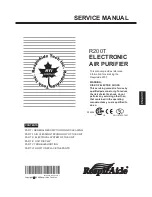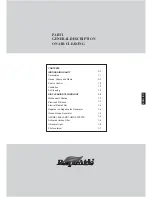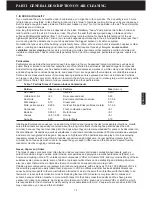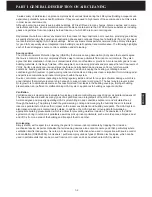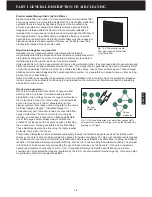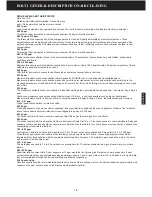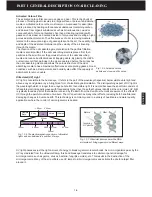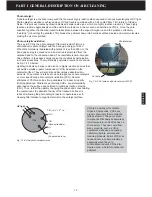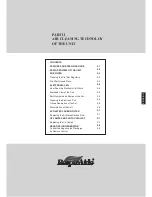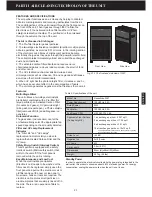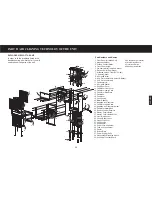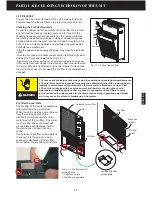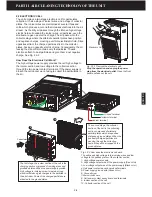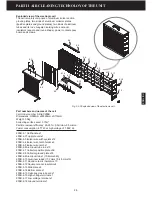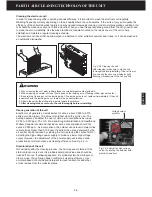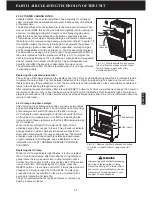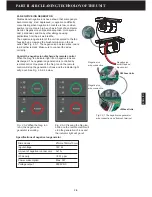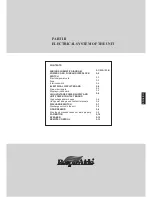
PART I GENERAL DESCRIPTION ON AIR CLEANING
1-2
A wide variety of molds also can produce mycotoxins at various times during their lifecycles. Building occupants can
experience potentially serious health problems if they are exposed to high levels of these compounds, but this is rare
in most indoor environments.
Although becoming a lesser issue in public buildings, ETS is still found in many homes, hotels, casinos, and in some
restaurants and bars. Environmental tobacco smoke alone contains more than 4,700 airborne substances, including
gases and particles from incompletely burned tobacco, of which 243 are known carcinogens.
Regardless of whether an indoor environment is the product of new construction or renovation, providing good indoor
air quality starts during the design and construction phases and continues throughout a building's life, and, it is never
too late to start managing IAQ in older buildings. Indoor environmental experts recommend three primary strategies
for good IAQ, especially when integrated into a building's overall operation and maintenance. The following highlights
each of these strategies: source control, ventilation and air cleaning.
Source control
The US Environmental Protection Agency (USEPA), the American Lung Association (ALA) and other experts agree
that source control is the only completely effective way to remove pollutants from indoor environments. They also
agree that total eradication of indoor air contaminants often is not feasible or practical. A more realistic goal is to use
building materials, furnishings, finishes, office equipment, and cleaning products and processes that emit low levels of
VOCs. Surface cleaning also removes larger particles and kills bacteria and viruses on floors, furniture, walls,
doorknobs, bedding and linens, and bathroom fixtures. In addition, keeping the heating, ventilating and air-
conditioning (HVAC) system in good working order and air ducts and drip pans clean is important for minimizing dust
and particle accumulation and indoor mold growth within the system.
Source control also involves inspecting a building regularly inside and out for any signs of water damage, which is a
good indicator that moisture levels are high enough to support indoor mold growth. The best way to prevent indoor
mold growth is to eliminate all sources of excess moisture, from leaks in the building envelope, improper building
pressurization, an inefficient or malfunctioning HVAC system, appliances to building occupant activities.
Ventilation
Ventilation and air cleaning are invaluable for picking up where controlling sources of indoor air pollutants leaves off.
The two work hand-in-hand, as many types of air purifiers are an integral part of the HVAC system.
A well-designed and properly operating HVAC system brings in and conditions outdoor air and circulates the air
through the building. The primary benefit beyond warming, cooling and managing the humidity the air is to dilute
indoor air pollutants to minimize their impact on the indoor environment and building occupants. The HVAC system
also transports indoor air contaminants outside. In addition, the HVAC system is invaluable for maintaining
appropriate building pressurization, which is critical for preventing moisture intrusion. The downside is the HVAC
system may bring in outdoor air pollutants as well as pick up indoor pollutants, such as mold spores, allergens, dust
and VOCs from one area of the building and transport them to another.
Air cleaning
Simply stated, with respect to air cleaning the goal is to remove indoor pollutants by trapping them inside a
mechanical device. Experts emphasize that air-cleaning devices alone cannot ensure good IAQ, particularly where
ventilation itself is inadequate. As noted, air cleaning is most effective when used in conjunction with source control
and ventilation (USEPA 2006). Air cleaners / purifiers employ various types of filtration technologies, which can be
used in portable units that can be moved from room to room and can be attached to HVAC systems.
ENGLISH
Summary of Contents for R200T
Page 69: ...ENGLISH NOTES ...

